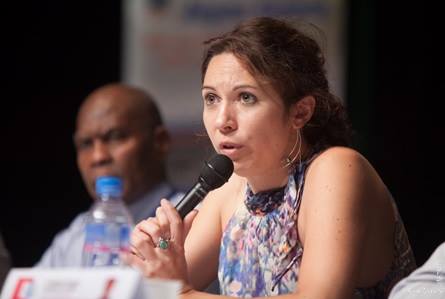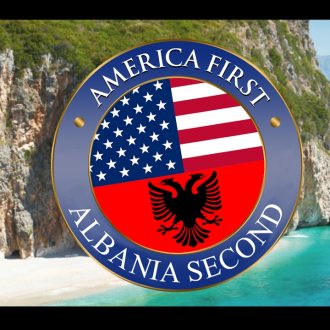Today, most of us understand the huge impact we are making on the environment. Experts agree that we need to act quickly to face the urgent problem of global warming. Yet, just a few weeks ahead of the international climate conference, COP21, taking place in Paris this December, people in countries like France still put the environment right down the list behind unemployment, delinquency and purchasing power (Ipsos Survey)… even though we are talking about the survival of humanity in the mid and even short-term.
Why aren’t people more interested? Is it because of the way the media covers ecology-related issues? Is it because of the words we use to describe our relationship with nature?
How can we tell people about this life-threatening issue that requires us to find a collective solution? To answer this question, Place to B carried out a series of interviews entitled “Storytelling & Ecology”.
Feature by Eve Demange.
“Our Life 21 : How to succeed in life as a family in 2050”
 The 4D association(the 4 Ds stand for “Dossiers et Débats pour le Développement Durable”, which translates as Cases and Discussions for Sustainable Development), was founded after the 1992 Earth Summit in Rio de Janeiro. Its goal is to support citizens in their energy transition, so they can move towards a development model that helps preserving the planet. Its director Pierre Radanne was also a member of the Organisation Committee of COP21. We interviewed Vaia Tuuhia, the General Delegate of 4D, about the “Our life 21” storytelling workshops she co-moderates with Marie Chéron.
The 4D association(the 4 Ds stand for “Dossiers et Débats pour le Développement Durable”, which translates as Cases and Discussions for Sustainable Development), was founded after the 1992 Earth Summit in Rio de Janeiro. Its goal is to support citizens in their energy transition, so they can move towards a development model that helps preserving the planet. Its director Pierre Radanne was also a member of the Organisation Committee of COP21. We interviewed Vaia Tuuhia, the General Delegate of 4D, about the “Our life 21” storytelling workshops she co-moderates with Marie Chéron.
Place to B: Can you tell us more about the “Our life 21, imaginer 2050” (Our life 21, Imagine 2050) project?
Vaia Tuuhia (4D Association): The world is facing two major challenges: on the one hand, political leaders must reach a global agreement on climate action in Paris. This is critical: if there is no consensus, we could end up with an international agreement that national parliaments will not sign. Take the Kyoto agreement: the Americans did sign the protocol, but since the US Congress did not want to hear about it, they did not ratify it in the end. To be implemented, the international agreement will have to result from a democratic process.
In case of a success, we will be facing another major challenge: since the implementation will impact people’s lives, how can we mobilize a wider public around the subject matter? The IPCC tells us that we should divide our greenhouse gas emissions by two by 2050. But these are global goals, purely abstract figures that only convey the “technical” aspect of the issue. Nobody knows what they mean for our everyday lives. We hear and read that we should avoid letting water run while brushing our teeth, or turn off the lights when leaving a room. The thing is, we need to go way further, and people don’t really get what all of this implies. Consequently they feel frustrated, and frustration does not help to initiate a real behavioral change.
We designed the “Our life 21” project because we wanted to show how things could work out at the scale of a family. What will it mean to be a happy family in 2050, provided the energy transition succeeds? What would a world that has won the fight against climate change look like? How will our everyday lives be like if we manage to keep global warming below the 2-degree limit?
Place to B: So what is “Our Life 21” concretely?
VT: The aim of the project is to organize workshops where people co-create life tales. We gather people from different social and cultural backgrounds, in different countries, and ask them to co-build a story based on real life and their imagination. Every workshop lasts for 2 days: on the first day, we give the participants the milestones, the material and the energy constraints they have to base their storytelling work on. We then use the stories and concrete situations they’ve come up with to create patterns that show us the impact everyday gestures have on climate. Thanks to these patterns, the participants leave us with a clearer indication of what they can concretely do to reduce their impact at their own, individual scale.
Place to B: Can you give us an example?
VT: Take one of the families we imagined in our storytelling fabric: the group chose to name them Amir and Isabelle. They are in their late forties, with three kids. They live in a peri-urban area and their income is quite low. They have to divide their energy consumption by two within the next 15 years. Their house is old. Once their youngest child had left the house, they started thinking about reorganizing and rearranging everything: people tend to do that when big changes happen in their lives.
So Amir and Isabelle are now on their own, in a big house with empty rooms. They are thinking heating system, insulation. They need to get the right information. If they had higher earnings, they would look into tax aids. But Amir and Isabelle are “sharers”: they want cooperation, exchange of services and means. Plus, their kids are encouraging them to switch to a renewable energy provider. If we decide to view a low-carbon economy as a middle-term perspective, then the changes Amir and Isabelle are facing start to look less problematic.
Our aim is to provide families with concrete solutions that will help them adopt low-carbon ways of living. “Our Life 21” tells of the lives of these families in 2010, 2030, 2050. By naming the concrete issues they could encounter in their everyday lives, ie issues that they will be able to act on, we are not only telling them that they can do it, but we are also showing them HOW to do it.
Place to B: Why did you choose to work with families?
VT: The aim of our project is to co-build stories. We are not on our own on planet earth. We share it with other people, who don’t live the way we do. There are big families, one-parent families… each of them with its own capacities and dilemmas.
Let’s look at another concrete action: meat consumption. How about establishing a meat-free lunch? This one concrete action could have a huge impact on the family’s footprint. Yet, if one of the members of the family is a meat lover, this can be a hard decision to make. Shopping sessions and meal preparation might take time, and imply lots of discussions. Why not imagining instead that a member of the family initiate the change, helping everyone to change their habits, step by step, so that every member of the family finds pleasure in the new diet in the end?
The location is another important storytelling criteria: you cannot compare a family that chose to live in the countryside with an urban family, each one has its own organization. We need to be able to tell different stories, and to match them with everyday situations: work, holidays, transportation, food. We have to take all differences into account if we want to be consistent and to co-build change within groups and on a whole generation. Why a generation? Because the change we need will be happening step by step, and imply progressive agreements that take into account elements of real life such as taste, financial means, and also individual choices.
If we want to succeed, each of us should not emit more than 1.6 ton of greenhouse gases per year in 2050. Which is four times less than what we manage today. To reach this goal, there is no magical way: each and everyone of us has to operate their own transition. So how do we tell our story and the story of our family, knowing these new constraints and opportunities?
Too often, we view change as a single gesture: avoid using our car, stop running water. I use these examples on purpose, because I keep hearing them all the time. The fact is that we have to do way more, and to consider transformation as what it is: a global move. Families evolve. Today’s children are to play a major part in the visionary construction of our future. It is essential that we try and achieve consistency at the family scale, so we can create a story that also integrates, besides change, all of the existing building blocks of our history. This is what we are trying to achieve through the “Our Life 21” project.




